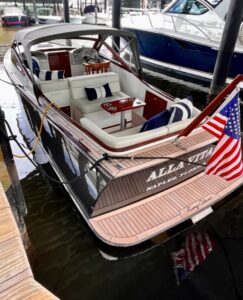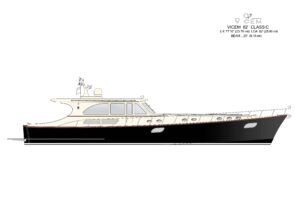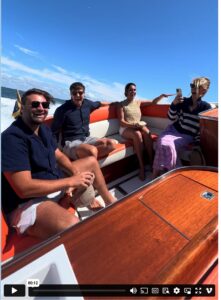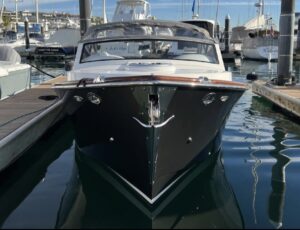Welcome back for chapter two of your continuing twelve-part series in advanced Zeelander ownership. In the end you’ll be awarded your well-deserved Masters in Zeelander Yachts degree.
This week we try to answer that age-old question of yachting, reportedly first asked by H.M.S. Bounty’s Captain Bligh himself:
Where is the best place to store my tender?
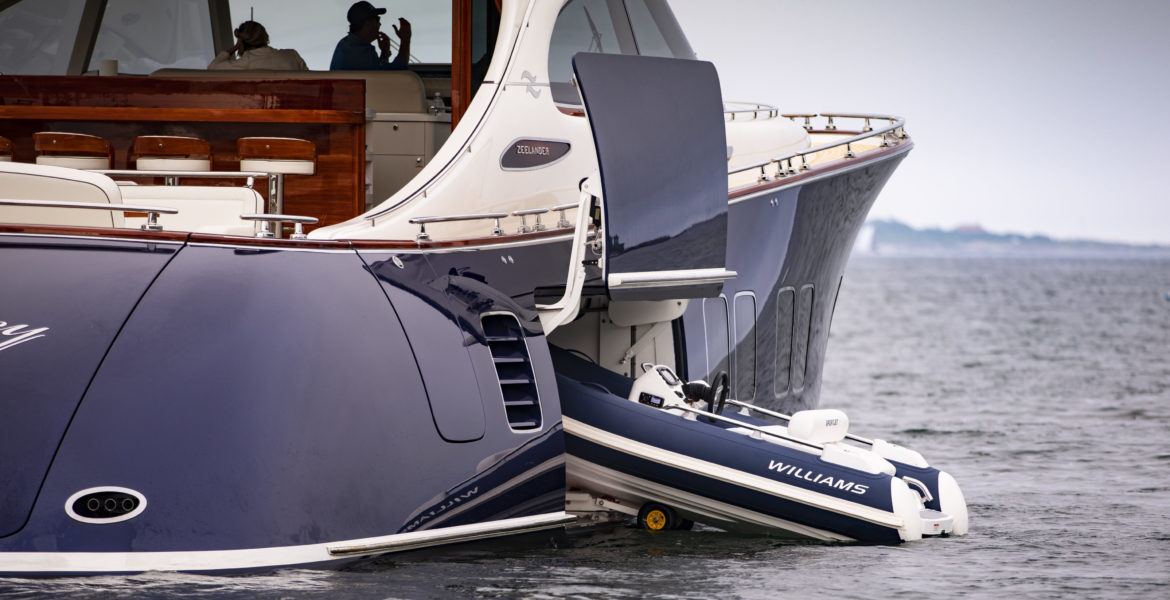
This discussion is somewhat technical (it includes a rating system of all choices), but then again this is an advanced degree!
I’ll begin with an admission of …. hard headedness. Over the years some long-time clients and readers of The Fog Warning have called me to task for my famously inflexible opinion about the best way to store yacht tenders:
“Trust me, all of your storage options are bad. Pick the least bad one.”
I’ll explain today how I came to that opinion. And why I’ve recently changed my mind.
The choices are fairly narrow. We all know that yacht tenders are stored Up, Back, Way Back, or Down. Having launched, retrieved, and transported a wide variety of tenders in my time, I get to make the rules. So I’m evaluating your choices under the following criteria:
- Space Utilization
- The “Disruption Factor”
- Aesthetics
- Safety
- Ease of use (and speed)
I rate on a scale of 1-10 (with an understanding that except for our children, there are no 10’s in either boats or life). I know from experience that my clients aren’t shy about expressing their opinions, so I look forward to hearing your own ratings. Just launch those flares!
I. THE UP
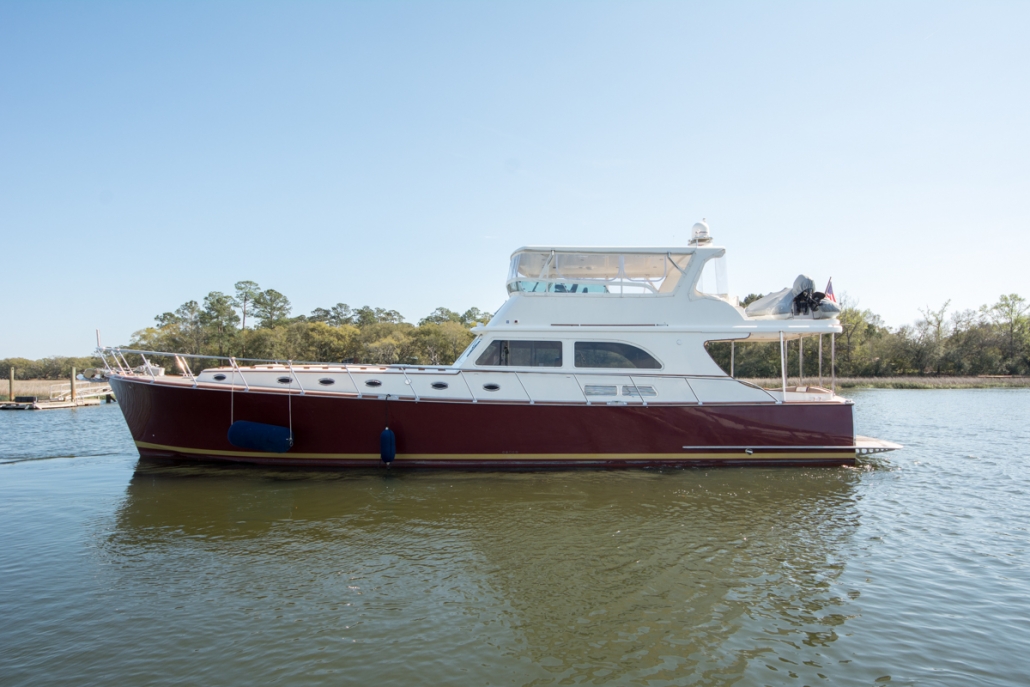
Flybridge yachts, like Mahogany Rose, above, offer tons of acreage up top for hydraulic cranes and tenders. Cranes can be sized to lift quite sizable tenders (not to mention cars, motorcycles, jet skis, and submarines). I’ve found that with some practice you can launch or retrieve even a fairly large tender in under fifteen minutes (in sheltered waters).
It’s a well-tested choice. With a yacht over 100,000 pounds, the added weight up high doesn’t affect your pitch and roll much, and if you’re fortunate to have stabilizers, not at all. Crane hydraulics are a tried and true technology, and if you check routinely for hydraulic leaks (and have a couple of quarts of backup fluid stashed in your bilges) you’re good to go.
In a fun aside, check out an earlier Fog Warning post about a creative (and healthy) emergency hydraulic fluid back up, under the Way Back section later in this post.
Here’s my own scoring on the matter:
- Efficient use of valuable space: With all that space up top, why not throw a tender up there? All in all, you can store larger tenders up top than any other solutions. And for bigger yachts, + 30 meters, you can even have both a crane/tender and a jacuzzi. My rating? 9/10.
- The “Disruptive Factor”: How disruptive is launching and retrieving a tender to your partying guests? Not very. It all happens largely without impacting anyone in the cockpit, or down below. But the process is a bit of a circus (like docking your boat in high winds, it tends to attract lots of gawking), and it invites lots of comments from your distracted guests. But when the time comes to line your tender back to your cockpit or swim platform boarding areas, things go more smoothly when your guests aren’t wandering about. My rating? 8/10.
- Aesthetics: Some find the look a little clunky, others find it wonderfully “shippy.” It’s a highly personal thing, and I’m not going to piss anyone off with my rating. But please let me know yours. No rating.
- Safety: There is no way around this – You’re swinging a 1,500 pound load twenty feet up in the air, often amidst wind or waves. It’s a one-man or woman operation in only the calmest of conditions. Otherwise, while you’re manning the crane remote, at least one other person (up top, down below, or both) must use tender lines and boat hooks to keep the tender aligned fore and aft with the mother ship. What’s more, as with all of your tender storage choices (except one, discussed below in THE DOWN) its easier and safer if you drop your anchor first. But I add points for this: I don’t know of a better shorthanded solution than a crane for a man overboard recovery. My rating? 5/10.
- Ease of use: Like I said, its a bit of a circus, with lots of moving parts. And, depending upon the reach of your crane, there will be situations where dockside use is impossible without turning the mother ship around 180 degrees. My rating? 4/10.
Big Wave Dave’s weighted average? 27/40, or 68%.
Note: Mahogany Rose, the Vicem 67 listing above, is in Charleston, and very much for sale (just launch a flare). In addition to the crane and tender up top, she also features a fully pivoting radar mast. It’ll allow you to get you under that 19′ 3″ bridge in Chicago, halfway through your life-changing Great Loop cruise.
Also, one of my older listings, a recently sold Viking 82, took a different approach to tender storage by putting the crane and tender up on the front deck. I’m curious how you’d score that one.
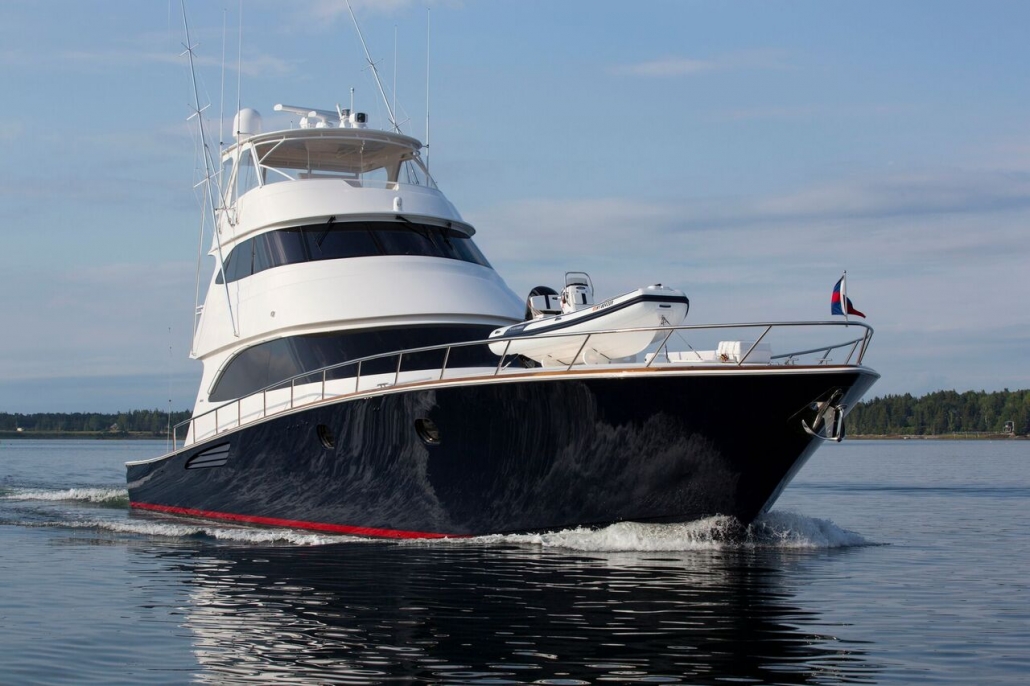
II. THE BACK
By “back” I means under the cockpit. From a design standpoint, doing that well can be very tricky. Designers have to give a lot of thought to the tradeoffs involved, because as that great deadpan comedian Steven Wright once said:
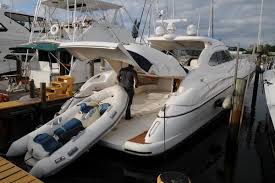
There are two ways to approach this challenge – a lifting cockpit (like the Palm Beach boats) or by means of a transom slide (most everyone else). In both approaches it takes larger boats – with both ample beam and freeboard – to pull it off well:
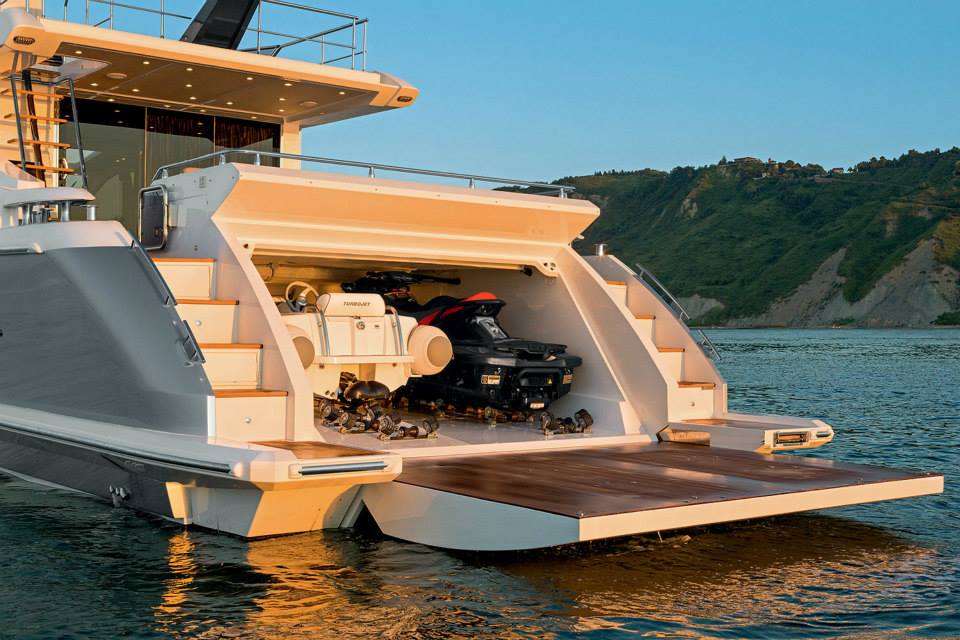
Case in point, narrower designs sometimes require partially deflating the tender to squeeze it in:
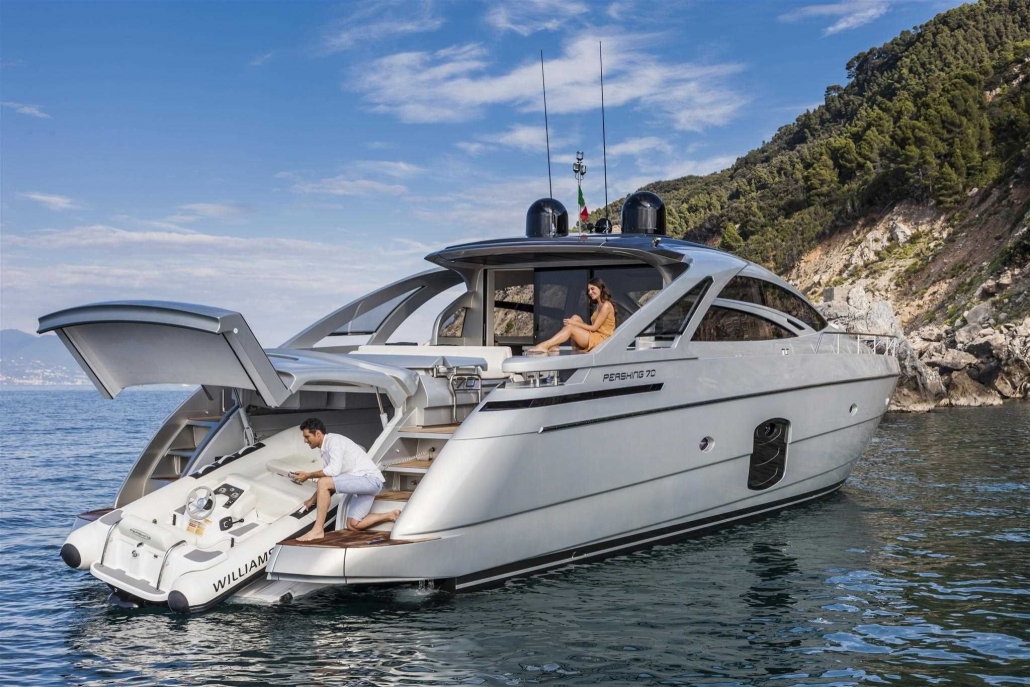
And some designs don’t optimize their freeboard considerations, and these can take some muscle (and gymnastics) to operate:

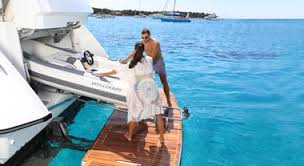
And, of course, the more you squeeze under your cockpit, the more you’ll limit your valuable space in the cockpit. This inevitably reduces your cherished seating and storage capabilities, as you’ll see here:

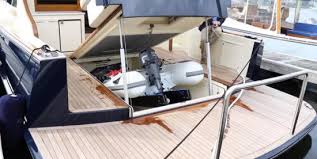
So, paraphrasing comedian Steven Wright, how am I gonna score it?
- Efficient use of valuable space: The above pix make pretty clear that the space tradeoffs – particularly as to cockpit seating and storage – can be significant. And for me, cockpit seating is a critical part of guests’ enjoyment. My Rating: 5/10.
- The “Disruptive Factor”: In a lifting cockpit design everyone has to bail out from the cockpit. My ratings? 1/10. And 8/10 for the rear slide (see smaller cockpit space, above).
- Aesthetics: It’s all about how well the designers can keep the freeboard profile reasonable. My rating? 9/10 if they can do it well. But if it looks like they’re hiding something big in the oven, a 6/10.
- Safety: No safety impacts that I can see. My rating? 9/10.
- Ease of use: Lifting cockpit – Not only do you have to clear the cockpit of guests, but you also have a fairly long walk aft to the end of the swim platform. I timed this last fall at eight minutes to launch or retrieve. My rating? 4/10. Rear slide: 8/10 (and six minute’s work).
Big Wave Dave’s weighted average?
29/50 (58%) for the lifting cockpit.
39/50 (78%) for the rear slide.
III. THE WAY BACK
What we all see every day, in every harbor: Swim platform mounts like Freedom Lifts:
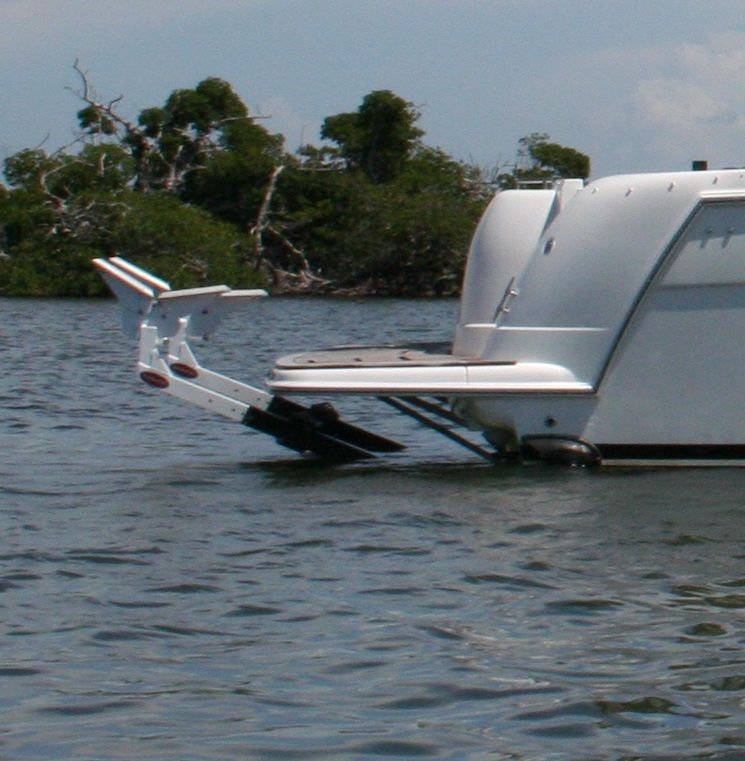
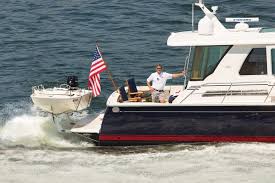
Or, hydraulically lifting swim platforms:
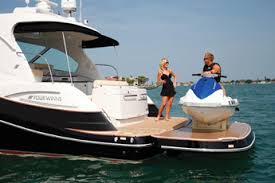
In my experience, both technologies work fine. Builders love them because they require little or no design modifications at the factory. And there is a healthy after-market business culture to sell and support them.
My reservations, such as they are, are not deal-killers. I don’t love the corrosion risks of Freedom Lift’s aluminum components. But I do appreciate the sliver of useable platform space it allows between the transom and the edge of the tender.
And the hydraulic platforms? Well…
- Obviously, it’s a two step dance – You’ve got to first launch the tender before your guests can swim from the platform, or use it as their private “beach.”
- Backing into a slip you have to remember that you’ve got twelve or eighteen inches of tender sticking out beyond the swim platform edge. That’s going to hit the dock before your boat does. The costs of forgetting are high (Don’t ask…. just please don’t ask).
- While the pictures and videos rarely show it, best practices require that the tender be tightly tied down to the chocks or mounts, and that the platform be tightly strapped to the transom. This takes more time than you might expect, and often take some gymnastics to get it all right.
Here’s how I score it:
- Efficient use of valuable space: You can store your tender aft, or you can have a platform for boarding or swimming. You can’t do both well unless the yacht is particularly big, or the tender particularly small (see Steven Wright, above). My Rating? 6/10
- The “Disruptive Factor”: Points added for having an unencumbered cockpit space. Points lost for “you can’t do both well,”above. My Rating? 7/10.
- Aesthetics: Well, the degree of gracefulness depends upon whether you are at rest, or underway. At cruising speed, that additional four or five degrees of bow rise really adds to an awkward look when you’re balancing a tender way aft. My Rating? 4/10 at rest, 2/10 underway. I average it out here to a 3/10.
- Safety: Having a functional lifting platform available at all times is a great man overboard recovery tactic. But of course you’re unlikely to have the time to launch the tender first when you hear that big splash and yell. Plus, see backing in, above. My Rating? 4/10.
- Ease of use: But for strapping things in and down, they are easy-to -use solutions. But doing it right can easily take six or seven minutes. My Rating? 7/10.
Big Wave Dave’s weighted average? 28/50 (55%).
NOTE: That creative emergency hydraulic lift repair I mentioned earlier?

You can read all about it in this post here.
IV. THE DOWN
As I’m mentioned up front, my conclusions about tender use and storage have evolved over the years. With a bunch of Zeelander operating hours now under my belt, I’ve seen that putting the tender below deck in a central garage is a game-changer. After all, megayachts have been doing this for years, and they be no fools:

My own conversion began with this: A “real time” retrieval video that clocks in – beginning to end – at just 1 minute and 50 seconds:
Here’s how Zeelander pulls that off:
The garage is standard equipment for both the Zeelander 55 and the 72, and the tenders are chosen off their option lists.
Sans le youyou (as the French say), the garage of our next available Zeelander 55 – shipping to the USA next month – looks like this:
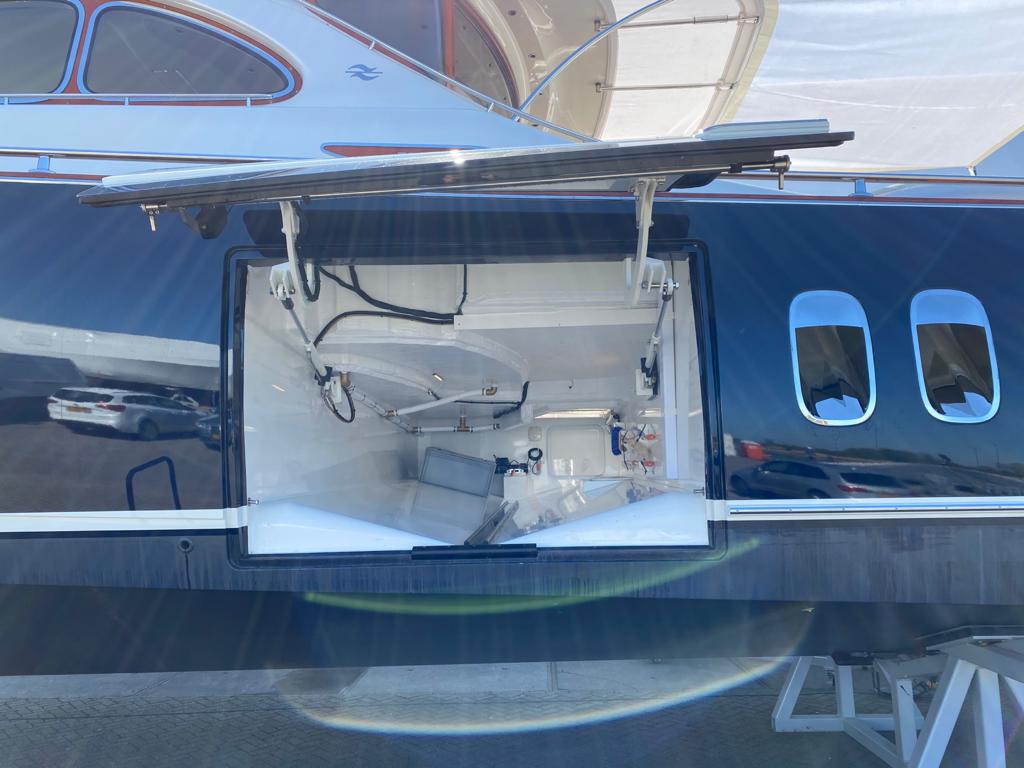
You’ll get a better sense of its location from these Z55 and Z72 plans. Note that the weight of the tender is exactly where designers want it for optimal handling – Low and central!
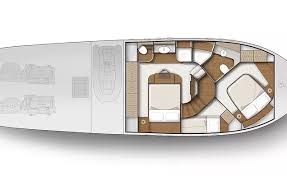
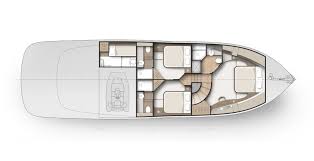
With all tender storage solutions, you’ll know its done right when the yacht’s trim doesn’t change, with and without the tender. I use the “marble test” to check (does a marble roll about differently on the flat cockpit deck, before launch and after?)
In my experience, Zeelander’s do not lose their marbles.
When I say that designers look for “optimal handling” in their weight calculations, for both the Z55 and the Z72 their turn-on-a-dime ability is fully verifiable by video, as seen below:
As for tender choices, both garages are custom-sized for either a Williams 280 or a Williams 285 Minijet tender.
The Williams 280 is 9-foot 2-inch long, and weights 440 pounds. Its 45 horsepower waterjet engine gives her a top speed of 31 knots:
The Williams 285 is 9′ 6″ long, and weighs 695 pounds. It’s 85 HP engine pushes her to 37 knots.
But, for speed demons everywhere, an optional 100 HP engine delivers 42 knots! Notably (for all you drag racers) that is the top speed of both the Z55 and the Z72 models with their largest engine packages (of course, the packages we chose for our coming Z55 and Z72 stock yachts).
If you and your’s require a bigger tender, Zeelander has a plan for that (where there is a will, there is a way!) If you go back and review the Z72 plans above, you’ll notice that just behind the garage is the crew cabin. If you opt out of that cabin, you can extend the garage to handle a full 5-person tender, the 12′ 8″ Williams 395:
To the extent that a tender is a water toy (albeit a large one), I’ll note that the garage has dedicated storage space for other water toys. Just about the most popular item off Zeelander’s option list are SeaBob’s. Most of the Zeelander’s delivered to date have one or two tucked into their garages, with additional charging stations installed by the swim platform):
If you want to push your water toy enjoyment to the max, the Zeelander 72 is large enough to store and present your own private (and moveable) “inflatable beach resort,” as shown here for soon-to-splash Z72 Hull #2:
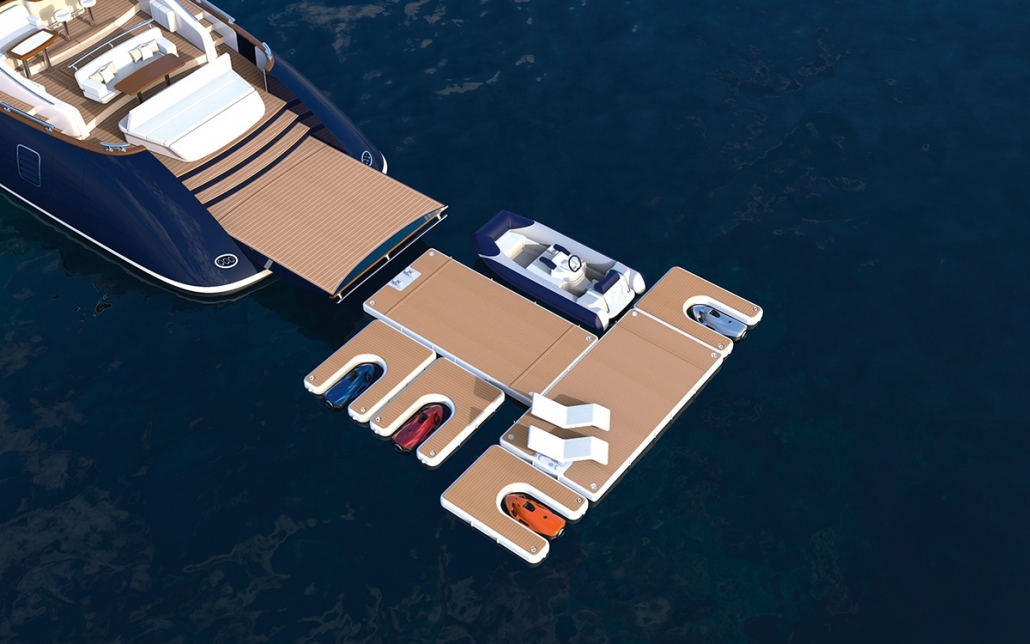
All that’s missing in this private beach resort pic is Zeelander’s “safari” approach to celebrating sunrises and sets:
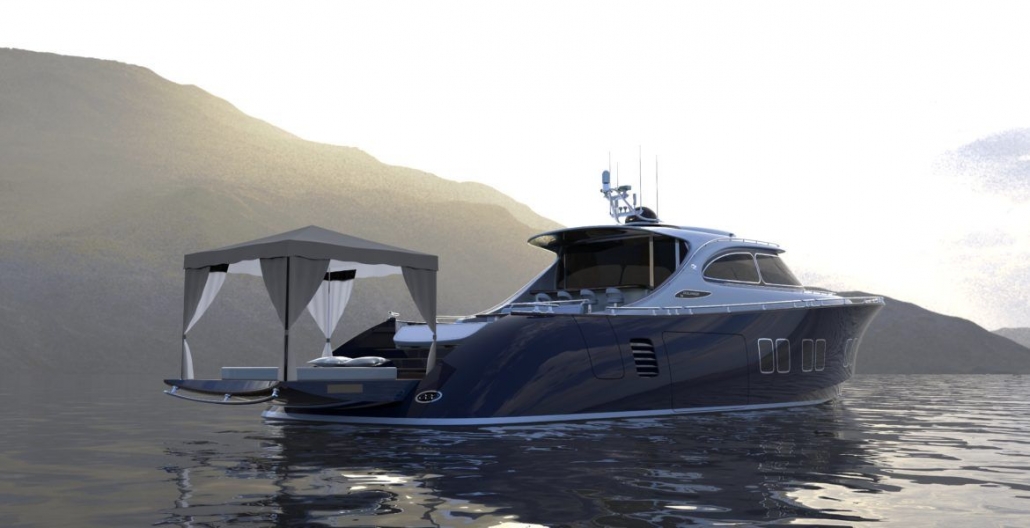
As always, for the full details about yacht base pricing and all of these options, just break out your flare gun.
Enough! My conclusions? By the criteria I’ve been using above, I have yet to find any significant disadvantages to this “Down” design. Here’s how I score it:
- Efficient use of valuable space: This is perhaps the most valuable yield I’ve seen from IPS engine placement. Moving the engine systems aft provide all the space a garage requires, without impacting either the size of the engine room or the size of the master or VIP cabins. My rating? 9/10.
- The “Disruption Factor”: On both models, access to the garage from deck level is by means of a hatch, away from exterior seating. Your guests and their margaritas can stay put. There is, however, some disruption on the Z55, as the hatch is just aft of the salon entry door. That will block traffic, intermittently. My Rating? 8/10.
- Aesthetics: There is simply nothing to see when the garage is closed. My rating? 9/10.
- Safety: I see no compromises to safety anywhere. Actually, quite the contrary. I’m sold on the garage’s central location for bad weather launches and retrievals. I’ll start with three examples: 1) With Zeelander’s optional gyroscopic stabilizer (look for that discussion in upcoming Zeelander University Chapter 5) and dynamic positioning systems (Chapter 9) you can always “anchor” the mothership so that you can launch and retrieve your tender on the down-wind and down-tide side, regardless of conditions. 2) With your key-fob remote control in your pocket, you can single-hand yourself in and out of the garage in any weather. 3) What’s more, you’re never stepping down into a pitching tender from a rolling deck – You start and end your journey already seated. I can’t say enough about these safety advantages, and I very much look forward to demonstrating them for you. My rating? 9/10 (only because I don’t do 10’s).
- Ease of use: Quick and easy, as our viral 1:50 video shows. Minor impacts include: 1) You can only dock starboard to (for the Z55), or portside to (for the Z72) to launch and retrieve. 2) When docked stern to, you’ll need 9′ of room between your yacht and the one aside you in order to launch. My rating? 8/10.
Big Wave Dave’s weighted average? 43/50 (86%)
I hope you’ve enjoyed this [too geeky?] chapter. If it gave you some things to contemplate during some idle moments, I’ll feel I’ve done my job (in a socially distanced way).
For me, this learning experience has been a reminder that happiness in life usually flows from flexibility. I began this chapter with my long-held opinion that all of your tender storage choices are bad. But new approaches and new designs have opened my eyes. I look forward to your thoughts on the matter.
V. Signing off
I’m going to close today with some recent pix and video’s of our next available Z55, Hull #7. She is just finishing the last of her last interior work in Rotterdam, and she will ship to us in thirty days. As you’ll see below, just about all she needs is her next owner. If that spirit moves you, we should talk fairly quickly. After all, why ship this fine yacht someplace other than your dock? Beats me!
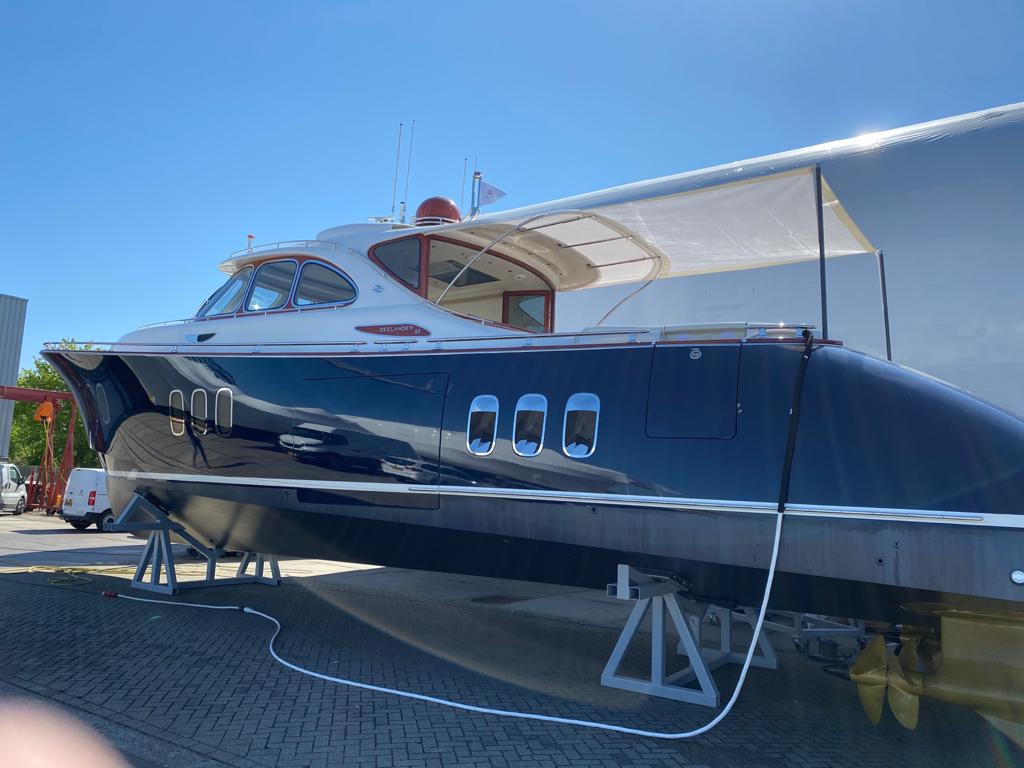
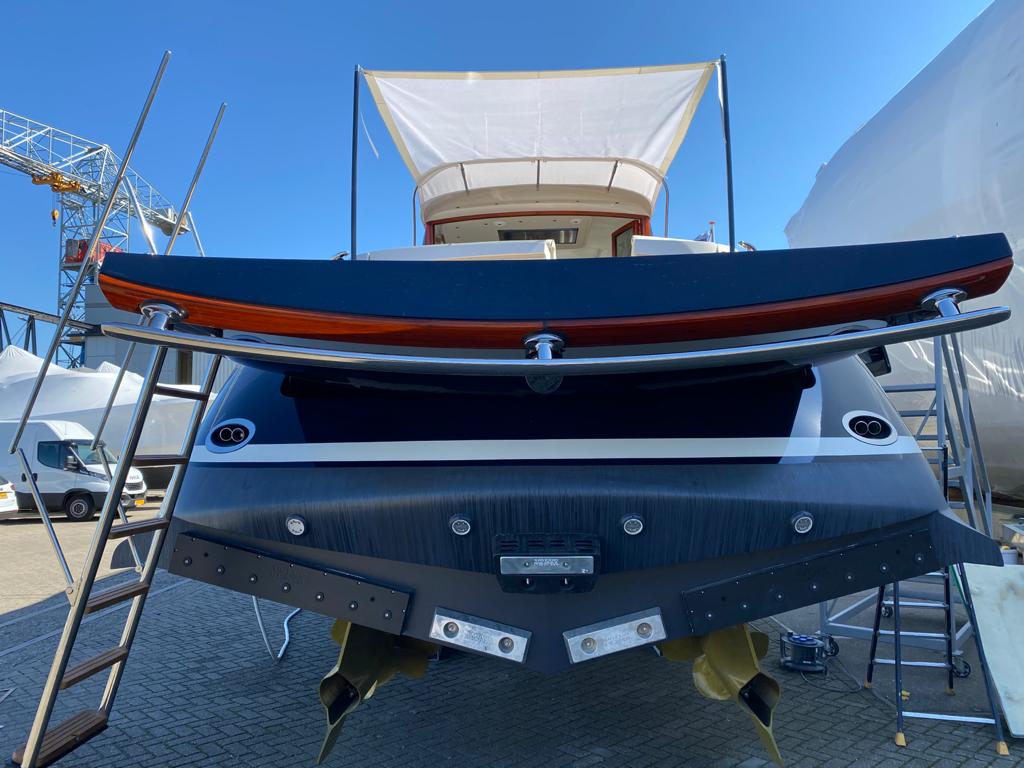
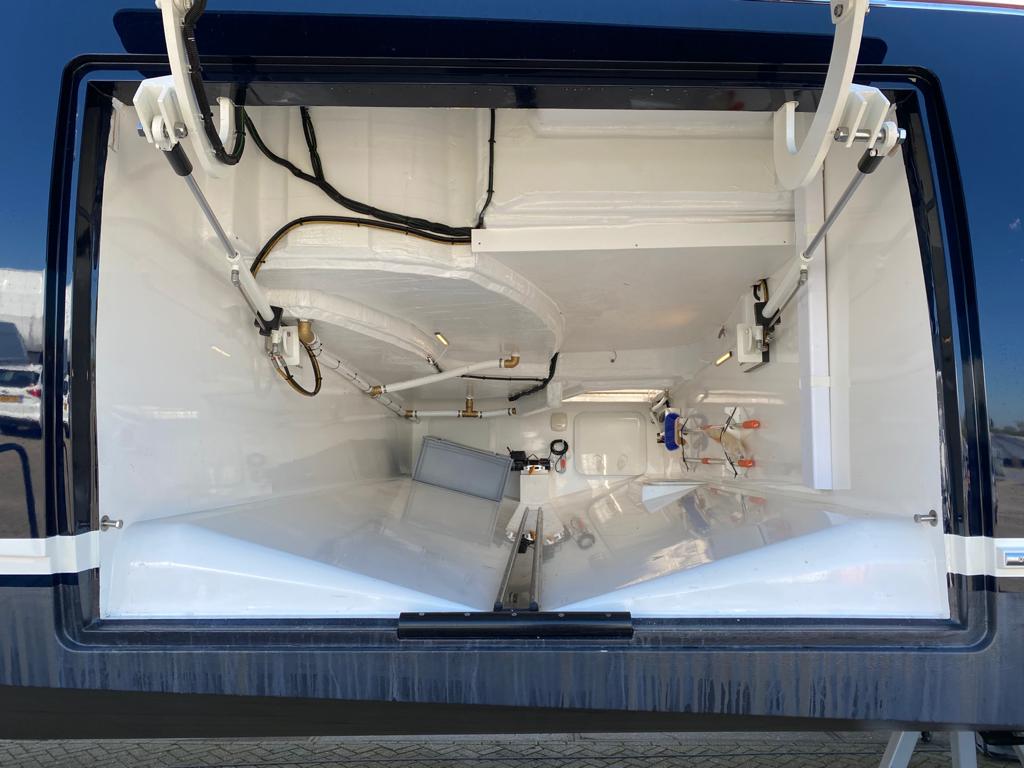
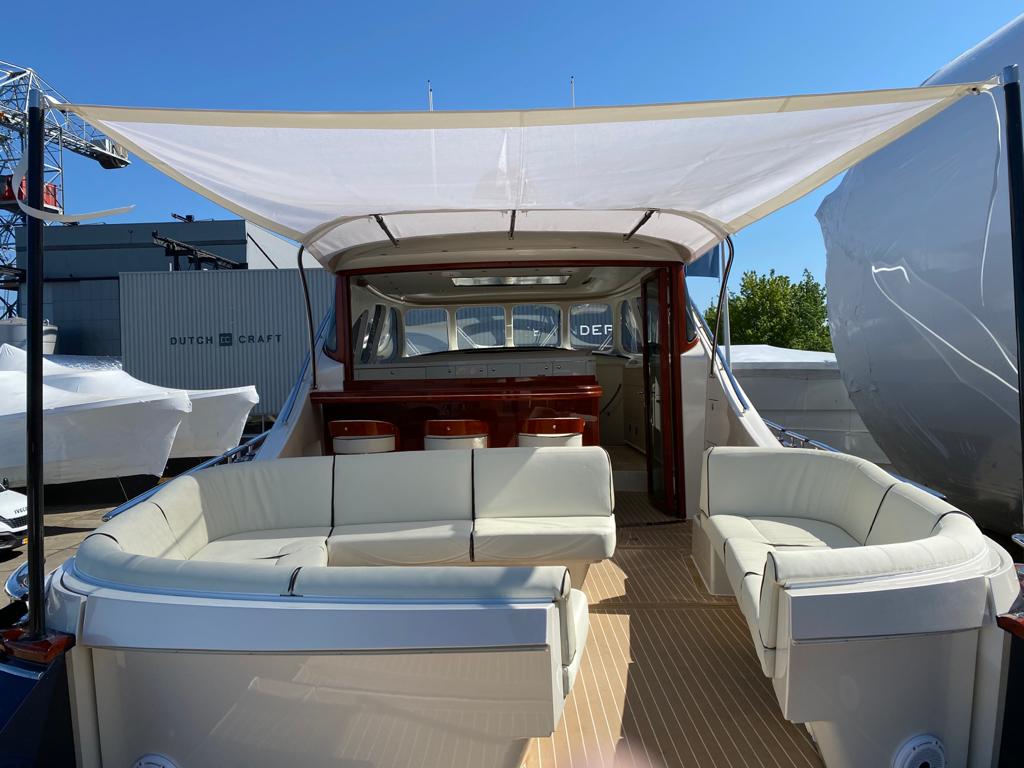
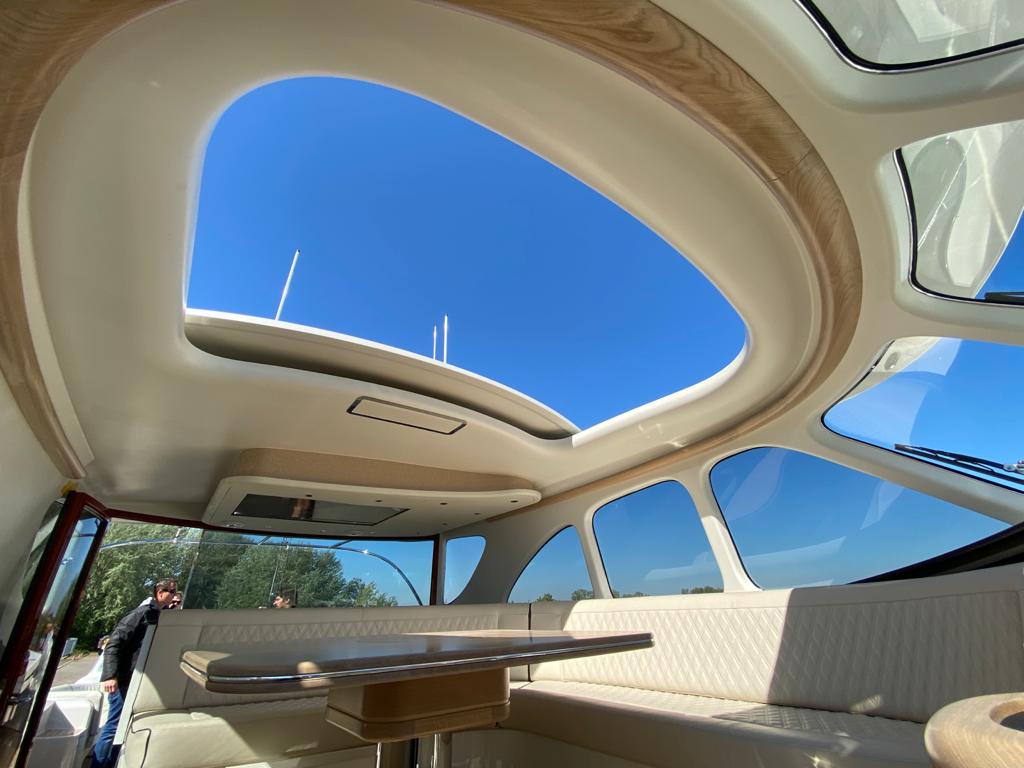
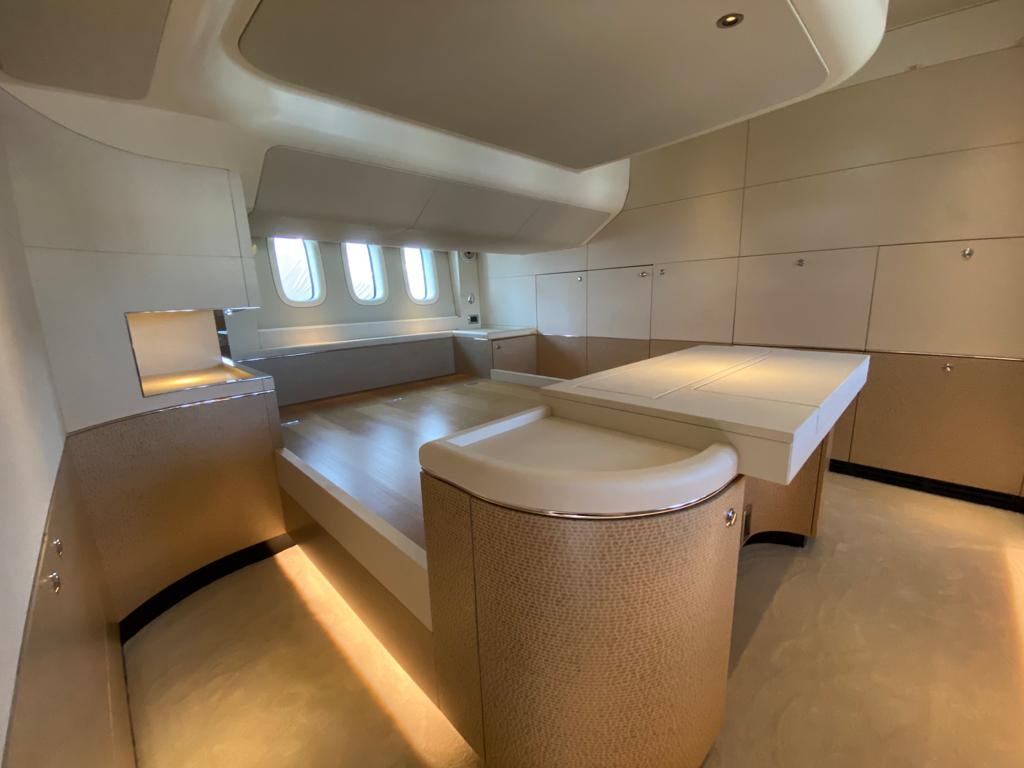
We will pick this up again soon. Meanwhile, stay safe.
Big Wave Dave

P.S. A small gift for you – This punk version here of Elvis’ classic Love Me Tender. If you’ve rocked out like this lately, I want to hear all about it.


